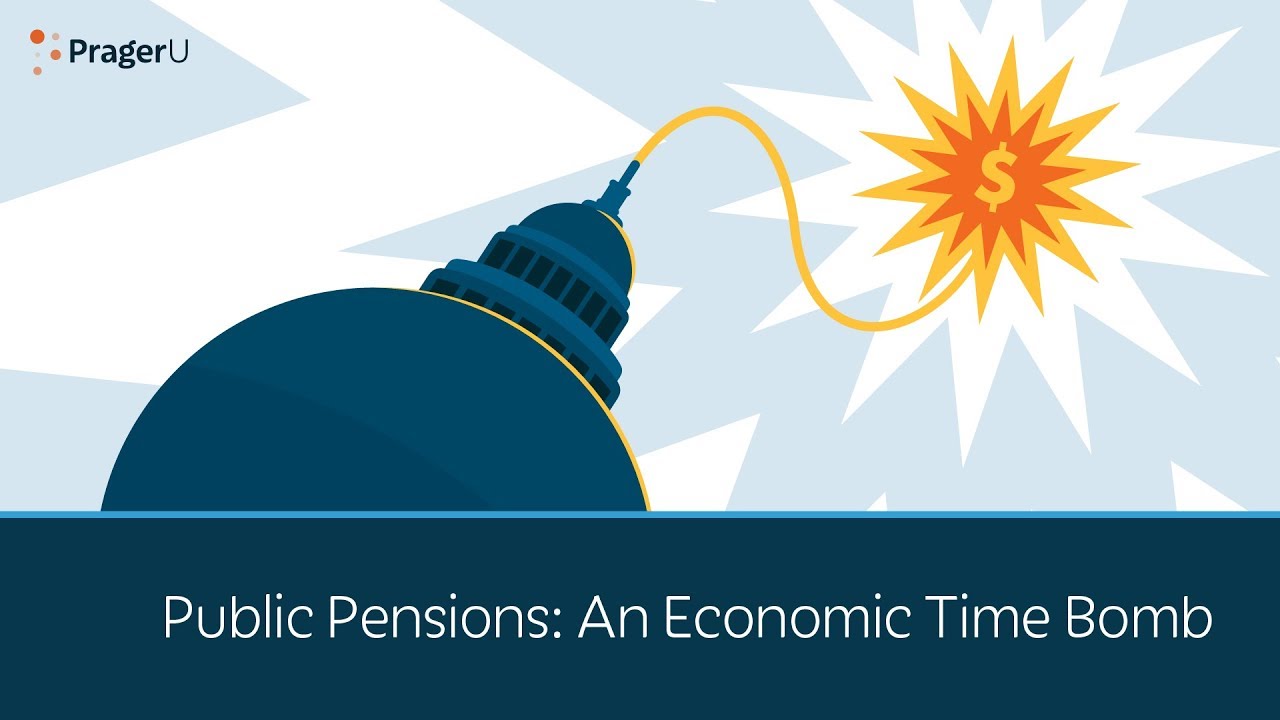Who cares about public pension liability? Well, you should – after all, it’s the reason entire cities and even states are facing bankruptcy. Joshua Rauh, professor of finance at Stanford and Senior Fellow at the Hoover Institution, paints a startling picture of just how broken the public pension system really is, and what will happen if we continue to ignore it.
Script: I want to talk to you about three words that should scare the heck out of you, especially if you’re young: public pension liabilities. Okay, I know you probably have about a hundred things you’re worried about, and public pension liabilities likely aren’t one of them. But that’s the reason this is so scary—because almost no one is paying attention. Unless you’re okay with your city going full Detroit and giving more of your hard-earned money to pay off someone else’s debts, stay with me. So what is a public pension liability? A pension is a guaranteed, lifetime payment to someone after they retire. Pensions used to be a big deal in the private sector. Every major American company had them. But they became too expensive, and companies have taken steps to phase them out. However, pensions still live on in the public sector—among employees of the government—and they’re eating city and states’ budgets alive. More and more money that could go to tax cuts or better services is instead being shoveled aside to pay for these benefits. Why is this happening? Over decades, politicians have promised trillions of dollars in pensions to government workers. That includes police, firefighters, teachers, and city and state officials. You name a government job, and there’s a pension associated with it. Now, you may be wondering, “How big are these payments?” Many pensions are quite large. In California, more than 62,000 retired public employees are receiving pensions of over $100,000 per year. Sometimes, it’s even crazier. A retired New York City sanitation worker is getting $285,000 per year. A retired county administrator in California receives over $400,000 per year. Remember, these are guaranteed lifetime yearly payouts. Now, we love our public employees. They do vital work for our local communities and the wider society. They deserve competitive pay and retirement benefits. But currently, many cities are, in effect, paying for multiple public departments at the same time: the department that’s working now and, because people are living longer, a generation or two of retirees. The system amounts to a self-perpetuating, corrupt merry-go-round. Public-sector unions give large donations to candidates, who are then responsible for negotiating how much of your money goes to public sector workers. These arrangements not only promise high salaries in the short-term, but they also hide the payments that will be due down the road when it will be much too late. The results are predictable. State and local governments across the U.S. openly admit to 1.4 trillion dollars of unfunded pension liabilities, or $11,000 per household. “Unfunded” means dollars that have been promised, but there’s no actual money in the bank. And that’s just the amount they admit to. The real number, according to the Federal Reserve, is much larger—around 4 trillion dollars, or $32,000 per household. Pensions have already thrown California cities like San Bernardino and Vallejo into bankruptcy. And the entire state of Illinois is teetering on the edge. So how do politicians get away with this? They use a time-tested political strategy: they lie. For the complete script, visit https://www.prageru.com/video/public-…

